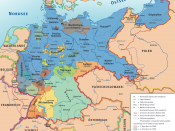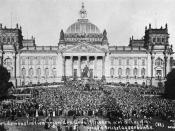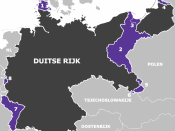The question of whether Germany was "dancing on a volcano" between 1924-29 relates to how successful this period of time was and whether people of that time were merely relying upon its short-term success, when it's complete downfall was to follow no later than up to five years later. As for its reliability to be seen as a true reflection of Germany's situation between period, only an examination of the foreign policies as well as political, and economical factors of the time will give us a conclusive opinion to the extent of the questioning statement.
The period of 1924-1929 is seen as the high point of the Republic - a so-called Golden Period. This is especially true when you compare this period to the crisis and chaos of rebellions (e.g. the 1919 January events), political assassinations (e.g. Walther Rathenau's assassination in June 1922), hyperinflation of 1923, high unemployment and the frequent violence that came before (1919-23) and the political and economic uncertainty that came after (1929-33).
Its apparent success coincided with the influence and (practical) guidance of Gustav Stressemann. He was chancellor for only 100 days and then foreign minister until his death in 1929.
Some historians have come to question how healthy (successful and stable) the Weimar Republic really was in this 'Golden Period'. They have suggested that such rapid disintegration in 1929 does not bear the hallmark of a new Republic with firm foundations.
There were various political successes in this period of time, both positive and negative points. Some of the more positive points are to follow. By this time there were no further attempts to overthrow the government by Putsch or revolution after 1923. In 1924 and 1928 elections the extreme left and right lost ground. The new republic was still being guided by the founder,


